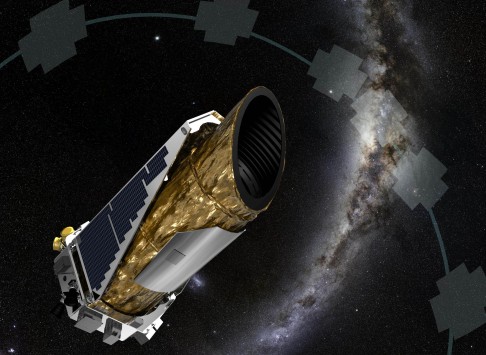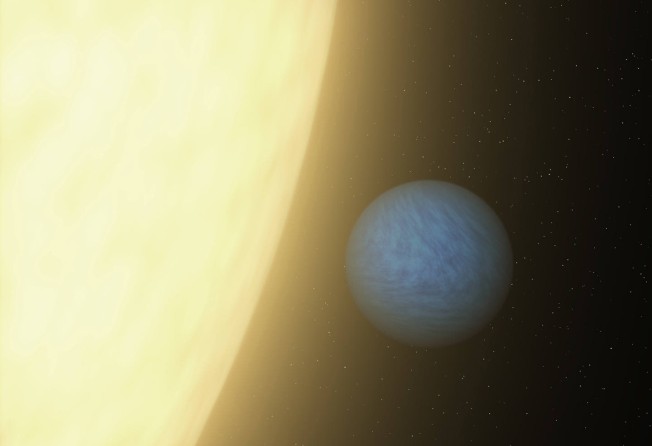
Two new earth-like planets 'capable of hosting life' discovered by Nasa telescope

Earth has a few more almost-twin planets outside our solar system, raising tantalising possibilities in the search for extraterrestrial life.
Astronomers announced yesterday that they have confirmed three or four more planets that are about the same size as the earth and are in the not-too-hot, not-too-cold “Goldilocks Zone” for liquid water to form.
These planets are likely to be rocky like the earth, and not gas giants or ice worlds. They get about the same heat from their star as we get from the sun, according to the latest results from Nasa’s planet-hunting Kepler telescope.
The closest to our planet, called Kepler 438-b, is only 12 per cent larger than earth and gets about 40 per cent more energy from its star than we do from the sun, so it would probably be warmer, said study lead author Guillermo Torres, an astronomer at the Harvard-Smithsonian Centre for Astrophysics.
It tightly circles a small cooler red star with its year lasting only 35 earth days and the sun in its sky would be red, not yellow.
It may hot, a toast 140 degrees, but “there are bacteria on Earth that live very comfortably in those temperatures, no problem,” Torres said.
The other, Kepler 442-b, is about 34 per cent bigger than earth but gets only two-thirds of the energy from its sun as we do, and would have a temperature close to zero, Torres said.
It orbits its star once every 112 days.
But don’t pack your bags yet. They may be close to earth in size and likely temperature in the gargantuan scale of the universe, but they are not they’re not within commuting distance.
Those two are 500 and 1,100 light years away; a light year is 5.9 trillion miles.
What’s important, said SETI Institute astronomer Douglas Caldwell, a study co-author who presented the findings at the American Astronomical Society meeting in Seattle, is that astronomers are a bit closer to finding twins of earth and answering the age-old question: Are we alone?
“What we’re really looking for is signs of life eventually,” Torres said. “We’re not there yet. It will take many years but this is the first step.”
“We are now closer than we have ever been to finding a twin for the earth around another star,” said Fergal Mullally of the Kepler Science Office. “These candidates represent the closest analogs to the Earth’s own system found to date.”
Torres’ team confirmed earlier discoveries and added new ones, bringing the total known number of planets that are no bigger than twice earth’s size and in the habitable temperature zone to eight or nine.
But that’s only from a short search of a small part of our galaxy, so Torres believes that earth-like planets are common throughout the cosmos, though he cannot prove it yet.
Torres likes to include one planet that would bump the new findings to four, but Caldwell said that planet may or may not be habitable.
NASA also announced that its planet-hunter telescope confirmed its 1,000th planet outside the solar system. Most are quite unlike earth and not in the habitable zone.
The Kepler space telescope which has scoured more than 150,000 stars for planets beyond our solar system since its launch in 2009.
Added to those discovered by other telescopes, astronomers have now discovered more than 1,800 planets that are outside the solar system.
“We don’t know for sure whether any of the planets in our sample are truly habitable,” said second author David Kipping of the Harvard-Smithsonian Centre for Astrophysics.